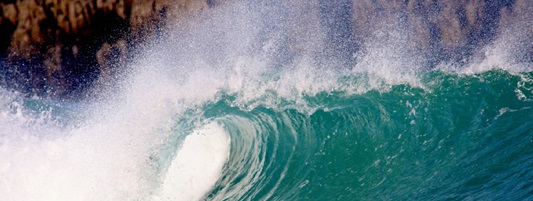Tides, waves and currents can be used to produce electricity. Although still at the research and development stage and not yet commercially available, promising ocean technologies include:
Wave energy, whereby converters capture the energy contained in ocean waves and use it to generate electricity. Converters include oscillating water columns that trap air pockets to drive a turbine; oscillating body converters that use wave motion; and overtopping converters that make use of height differences.
The total installed capacity of ocean energy reached 494 MW globally by the end of 2024.
Tidal energy, produced either by tidal-range technologies using a barrage (a dam or other barrier) to harvest power between high and low tide; tidal-current or tidal-stream technologies; or hybrid applications.
Salinity gradient energy, arising from differing salt concentrations, as occurs where a river empties into an ocean. Demonstration projects use "pressure retarded osmosis", with freshwater flowing through a membrane to increase the pressure in a tank of saltwater; and "reverse electro dialysis" with ions of salt passing through alternating tanks of salt- and freshwater.
Ocean thermal energy conversion, which generates power from the temperature difference between warm surface seawater and cold seawater at 800–1,000 metres depth.










